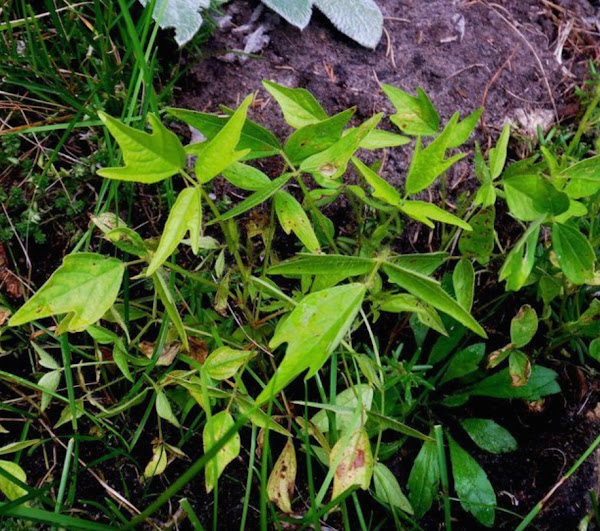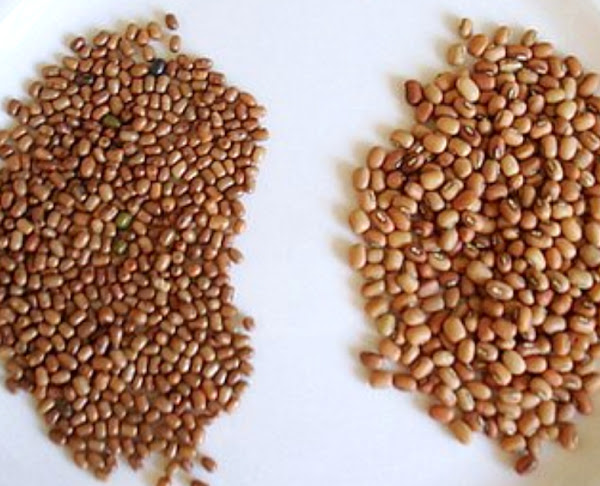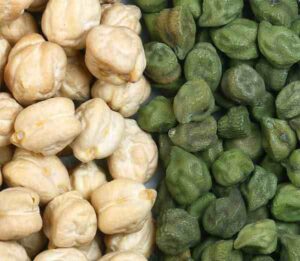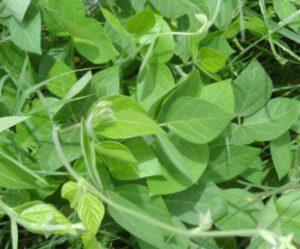Growing moth bean is popular in some parts of India. And it is generally grown in arid and semi-arid regions with extreme weather and fewer rains.
The moth bean is drought-resistant, the plants can be grown on many soil types and it is an important pulse crop of arid and semi-arid regions of India and Pakistan.
The moth bean (Vigna aconitifolia) is an herbaceous creeping annual plant which grows to approximately 40 cm high.
The yellow flowers on the hairy and densely packed branches of the moth bean plant develop into yellow-brown pods, measuring about 2-3 inches in length.
The pods generally holds 4 to 9 seeds inside. And the seeds are rectangular and come in a variety of colors including, yellow-brown, whitish green and mottled with black. The moth bean seeds are very high in protein, containing up to 22-24 percent protein.
The moth bean plants are highly drought-resistant, and they can create a low-lying soil cover when fully grown.
The moth bean has been identified as possibly a more significant food source in the future due to it’s drought resistant qualities, ability to combat soil erosion and it’s high protein content.
Origins
According to Wikipedia, the moth bean is native to India and Pakistan. And it has been grown for food production and as a forage and cover crop for long time.
The moth bean is predominately grown in India, but has also been cultivated in Australia, the United States, Thailand and other parts of Asia.
Other Names
The moth bean is also known by some other names in some other places and in many other different languages.
It’s other names include mat bean, matki, dew bean, and Turkish gram in English, Motth in Hindi, Math in Gujarati, Thanni Kaalu in Kannada, Matki in Marathi, Kancha Muga in Oriya, Thatta Payaru in Tamil and Bobbarlu in Telugu.
How to Start Growing Moth Bean
Growing moth bean is relatively easy, and you can start growing if you are a beginner.
It is a short-day crop and can be grown in almost all types of soil, and it is one of the most drought-resistant pulses in India.
Here we are describing more information about growing moth bean from planting, caring to harvesting.
Select a Location
The moth bean plants can be grown in just anywhere, and they can grown at altitudes up to 1300 meters above sea level.
While selecting location for growing moth bean, just ensure the selected location has well-drained soil and has access to full sun.
Preparing the Soil
The moth beans are not picky about soil types, they can be grown in a wide variety of soil types. The plants can tolerate slight salinity and has a wide pH range, typically 3.5 to 10.

Although the moth bean plans can be grown in a variety of soil types, but they generally do very well and prefer sandy soil.
1 ploughing with 1-2 cross harrowing will be just enough for preparing the soil. Applying chemical fertilizers is not common for growing moth bean.
Although you can apply some organic contents into the soil if you really want to do so.
Climate Requirements for Growing Moth Bean
Generally very little irrigation is required for growing moth bean plants. And moth bean is one of the most drought-resistant pulse in India.
Ideal temperature for growing moth bean is between 24 °C and 32 °C. But the plants can also tolerate up to 45 °C during the day.
Ideal annual rainfall for growing moth bean plants is between 500 and 750 mm (but the plants can also do well with 300 mm annual rainfall).
Best Time for Growing Moth Bean
The moth bean is a Kharif crop, and it is generally sown in May and June with onset of first monsoon showers. Delay sowing could be done in June end or by mid of July.
Choose Variety and Purchase Seeds
You should always try to choose those varieties which grow well in your area. Moth bean is common in India, so the seeds should be easily available in your area.
Today, there are some seed suppliers available with online stores. So you can also consider ordering the seeds online.
Seeds per Hectare
The moth bean can be grown both as single crop and forage crop. You will need about 10-20 kg seeds per hectare when grown as the only crop.
And 7-34 kg seeds per hectare when the moth beans are grown as a forage crop.
Planting
The moth bean seeds are generally shown in rows which are generally 1-3 feet apart.
And sow the seeds to about 3-4 inches apart and to 1/2 to 1 inch deep.
Watering slightly after sowing the seeds will ensure good germination of the seeds.
Caring
The moth bean plants generally require less care as compared to many other commercial crops.
Although taking additional care will help the plants to grow better. Here we are describing more about the caring procedures.
Fertilizing: The moth bean plants don’t require applying additional fertilizer.
Watering: Although the moth bean plants are very hardy and drought tolerant, they will do fine if they are irrigated adequately and timely. Watering especially during the flowering and pod developing stages will be very good for the plants.
Controlling Weeds: You don’t have to worry about the weeds if you grow moth bean as a forage crop. But controlling weeds is important if you are growing only moth bean.
Pests and Diseases
Moth bean is impacted by Mungbean yellow mosaic virus, for which silverleaf whitefly is the vector.
Root rot and seedling blight from Macrophomina phaseolina also causes damage, as well as some Striga species and the nematode Meloidogyne incognita.
Cultivating some resistant cultivars will be very helpful for preventing most of the pests and diseases. Also keep good contact with any of your local expert or agriculture specialist.
Harvesting
The moth bean plants generally take between 75 and 90 days from planting to harvesting.
Harvesting moth bean is pretty difficult, and it’s the main drawback to this crop.
You have to cut the plants with a sickle, because you can’t use mowers mainly due to the shape and density of the moth bean’s branches.
Then after cutting, it is threshed and winnowed after being dried for approximately one week.

Yield
Due to lack of advanced farming techniques, currently the seed yield are low. Current yield ranges from 70 to 270 kg per hectare.
Although, research shows that this crop has the potential to increase in yield (experimental seed yields of up to 2600 kg per hectare have been recorded in the United States and Australia.
Uses of Moth Bean
Moth bean has many different uses. The whole or split moth bean seeds can be cooked or fried, they can be used for breakfast or other meals.
In India (particularly in the state of Maharashtra), moth beans are sprouted before cooking and used for making a spicy stew called Usal.
The flour of the moth bean seeds is used for making bhujia which is another savoury snack.
It is believed that ‘consumption of the moth bean seeds can help treat a fever’. The moth bean is also consumed as a forage crop by the livestock animals.
Moth Bean Nutrition
The moth bean seed is very nutritious. Generally 100 grams of raw, uncooked moth bean seeds contain about 1.6 grams of fat, 23 grams of protein, 62 grams of carbohydrate and 343 calories.
The moth bean seeds contain antinutritional factors that limit available protein. But research has shown that it contains considerably less of these factors compared with other legume grains, making it a more beneficial choice for consumption.
Soaking and cooking moth beans before consumption helps to break down antinutritional factors and makes the protein more digestible.
If you prefer consuming moth bean, then consider growing moth bean. Follow the steps mentioned above and you will definitely be able to grow moth bean and produce a good yield. God bless you!







planted already thanks for the training